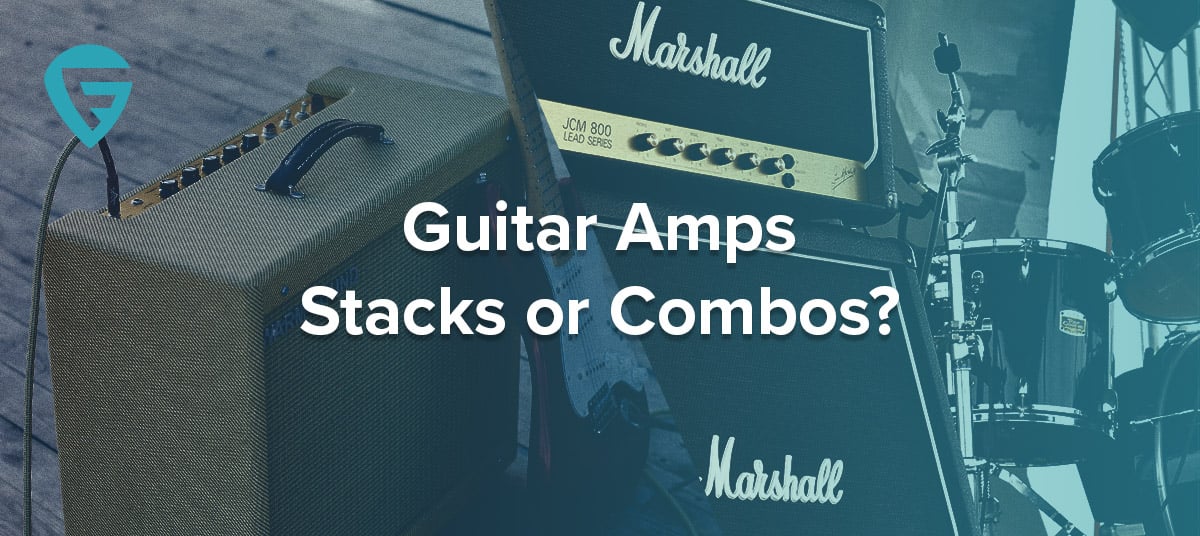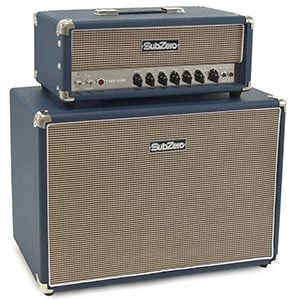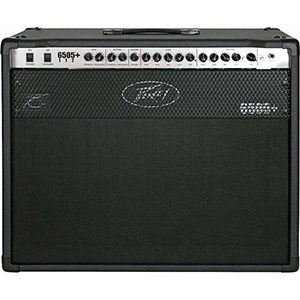- Home
- Instruments
- Gear
- Recording
- Lessons
- Reviews
- Blog

Guitar amplifiers are the backbone of modern music, and have completely transformed the landscape of instruments we use today. Not only are guitars amplified, but so is just about any other type of instrument you can think of. With that said, guitar amps are the most popular and prolific type amplification.
There are generally two large categories of guitar amplifiers- tube amps and solid state amps “Making The Choice: Tubes or Solid State”. Aside from that primary division, we can also differentiate amp by the form factor they come in. You either get an amp head + cabinet setup or a combo amp. Each of these has their own pros and cons, which is what the subject of our article today is all about. We are going to try and make a case for each of these, and show you what you can expect from both types of configurations.
 Guitar amp stacks are probably the most popular choice for professional guitar players and those who perform a lot. A stack is essentially an amp head connected to one or more cabinets. There are certain benefits and drawbacks of this type of configuration. First of all, it offers a lot more versatility. You can take a single amp head, and connect it to numerous cabinets of your choice.
Guitar amp stacks are probably the most popular choice for professional guitar players and those who perform a lot. A stack is essentially an amp head connected to one or more cabinets. There are certain benefits and drawbacks of this type of configuration. First of all, it offers a lot more versatility. You can take a single amp head, and connect it to numerous cabinets of your choice.
A lot of experienced guitar players who have been perfecting their tone for years will have a taste in cabinet speakers. Maybe they will like standard Greenbacks for one genre of music but go with Alnico Blues for another. A choice of a speaker can actually make a difference. On a similar note, recording studios will pick and form different amp – cab combos all day long until they find exactly the color of the tone they are looking for.
Another great thing about using stacks of amps is the fact that you can add more cabinets for more volume. Sure, at some point you will have to include some pretty specific equipment into the equation, but for someone who's playing small to mid-sized venues, two cabs instead of one can make all the difference. One of the several drawbacks of amp stacks is their price. Building a system from the ground up can cost a considerable amount of money, especially if you want the good stuff.
In terms of users who don't perform that often, and who will have the amp stack sitting in their bedroom for the most of the time, it provides a very tempting but ultimately inefficient practice setup. If you are using tube amps, for example, the only way to get the best performance out of an amp is to push those tubes hard. Good luck doing that at home without either suffering hearing damage, or getting the police called on you for noise complaints.
 On the other side of the isle, we have amp combos. The whole point of a combo is to give you both the amplifier and a speaker setup in one package. The benefits of such systems are obvious. It’s easier to transport as there’s only one element to worry about, and they are somewhat cheaper due to their 2-in-1 nature. On a similar note, combos are the preferred choice for home practice rigs as they are often times a lot more flexible in terms of volume.
On the other side of the isle, we have amp combos. The whole point of a combo is to give you both the amplifier and a speaker setup in one package. The benefits of such systems are obvious. It’s easier to transport as there’s only one element to worry about, and they are somewhat cheaper due to their 2-in-1 nature. On a similar note, combos are the preferred choice for home practice rigs as they are often times a lot more flexible in terms of volume.
If we said that combos can’t be used for stage performance, we would be lying. However, the standard practice shows that this type of amp is rarely seen in such settings, even though a good portion of them allows for speaker cab extensions. One more thing that makes combo amps so popular is how small they can be. As a proof of sorts, just check out our very own Best Guitar Amplifier list.When you are looking for something to use at home, you definitely won’t want a huge cabinet full of power. You will want something you can handle.
Sure, amp heads come in formats. from super small to rather big ones. However, even a small amp head requires some sort of a cab in order to produce sound. That is simply not the case with combos. Manufacturers cater their power output in accordance to the speaker setup. So even tube amps come in sizes that can be handled at home.
Whether a stack will work better for you than a combo is something you need to figure out on your own. Sit down and find out what type of application have in mind for either of these and construct your requirements based off of that. It’s very tempting to say screw it and go get the biggest, baddest stack you can afford, especially if money is not an issue.
However, doing so can cause a lot more harm than good if your needs don’t warrant such a setup. Not only will you waste money, but you will end up with an amp that you simply can’t use. That is generally why combo amps are so prolific these days, especially in the tube category. At the end of the day, it’s all up to you and what you think will work the best for your specific set of needs. We hope you enjoyed this ride, feel free to look around and find your very own best guitar amp. Rock on!

Reader Interactions